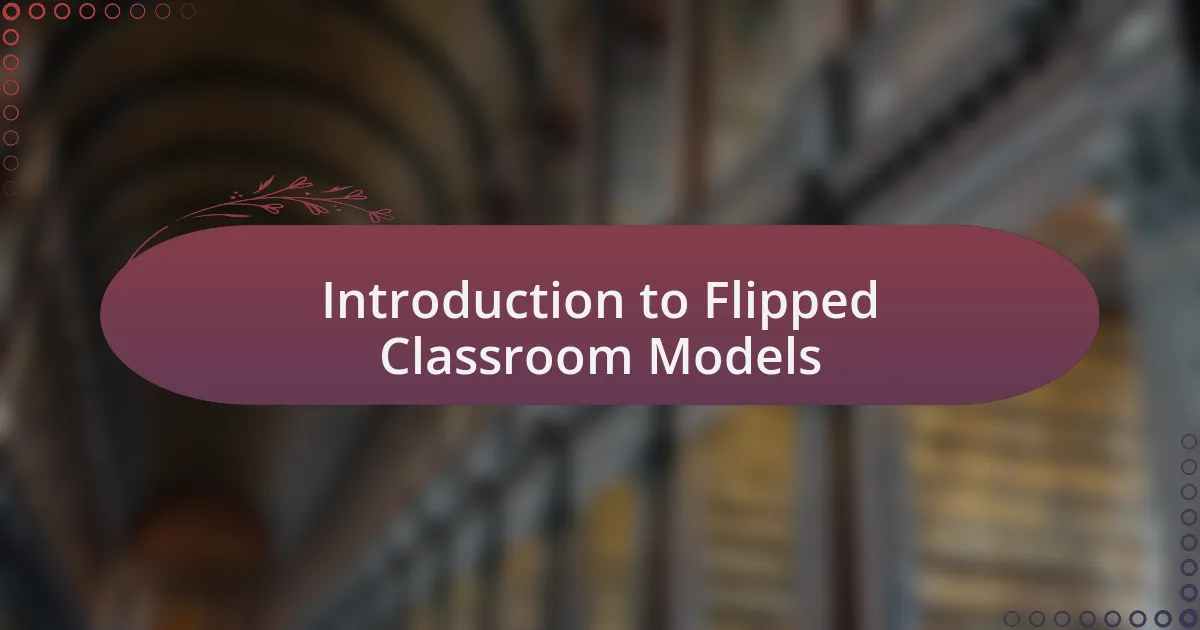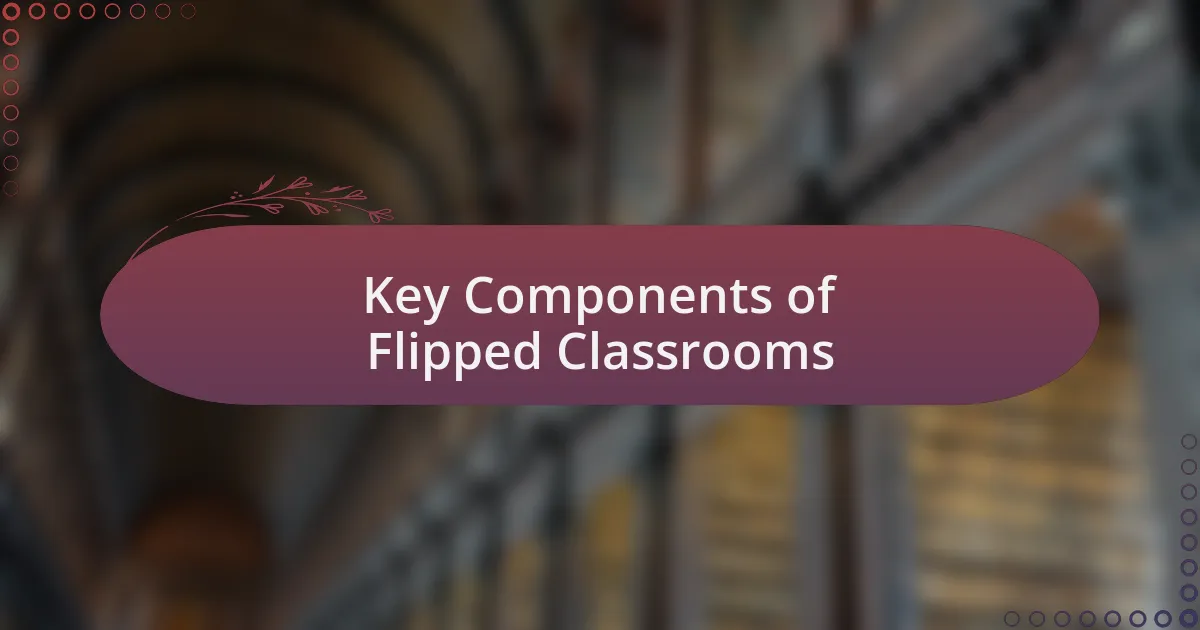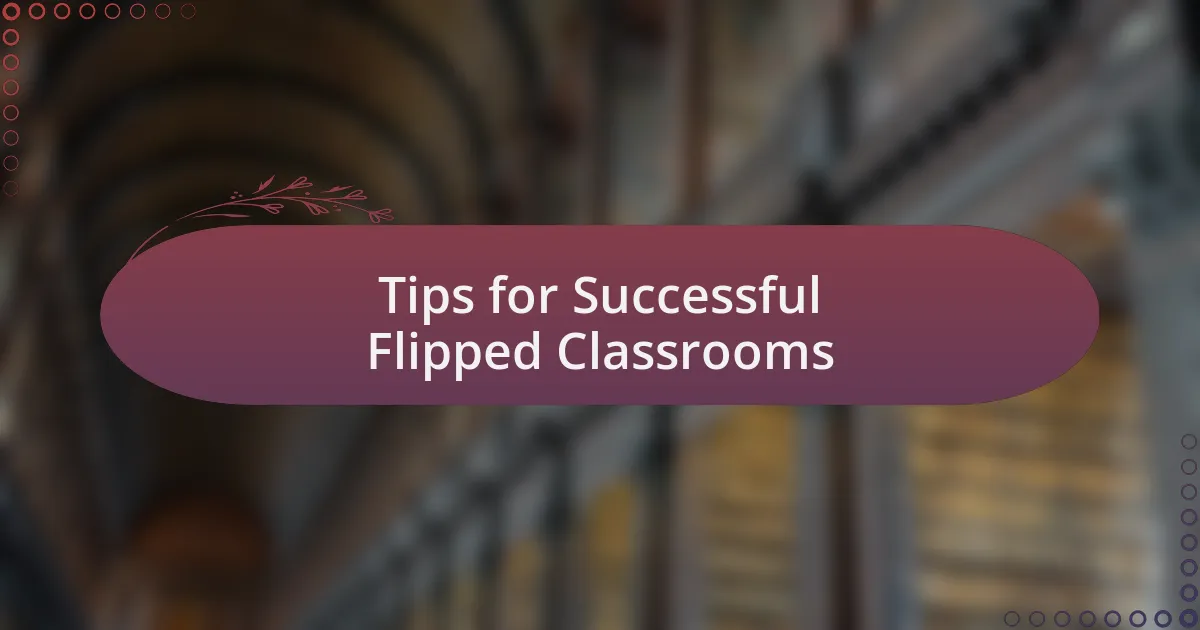Key takeaways:
- Flipped classroom models invert traditional teaching, allowing students to engage with content at home and participate in interactive activities during class.
- Benefits include increased student engagement, customized pacing for individual learning, and enhanced teacher-student interactions.
- Key components involve pre-class preparation with video lectures, active in-class learning, and ongoing assessment for dynamic feedback.
- Successful implementation requires clear instructions, a supportive classroom environment, and regular feedback loops to improve the learning experience.

Introduction to Flipped Classroom Models
Flipped classroom models represent a significant shift in how we approach teaching and learning. Instead of the traditional method where the teacher delivers content in class while students do assignments at home, the flipped model inverts this dynamic. I remember the first time I experienced this approach; it felt like unlocking a new level of engagement in my learning, sparking curiosity like never before.
In a flipped classroom, students access lectures or instructional material at home—often through video or online resources—allowing classroom time to be used for interactive activities and deeper discussions. This method invites students to take charge of their learning, fostering a sense of ownership that can be both empowering and refreshing. Have you ever felt frustrated sitting through long lectures? I certainly have. Flipping the classroom experience alleviated this challenge, making learning feel more relevant and connected to my interests.
The emotional impact of a flipped classroom model is palpable. I distinctly remember how participating in group activities and discussions during class transformed my connection with the material. It made learning less about rote memorization and more about meaningful collaboration. Doesn’t it feel great to contribute to a lively conversation rather than passively absorbing information? The flipped classroom not only reshapes the educational landscape but also nurtures a more engaged and enthusiastic learner.

Benefits of Flipped Classroom Models
One of the most significant benefits of flipped classroom models is the ability to engage students in a way that traditional methods often fail to achieve. I recall a math class where we watched video tutorials at home, and during class, we tackled complex problems together. It was astonishing to see the immediate feedback and collaborative problem-solving that emerged. Don’t you think it’s empowering to solve tough challenges with peers right by your side?
Another advantage is the customization of learning. In a flipped model, each student can move at their own pace, reviewing video lectures as needed. I remember a classmate who struggled with a particular concept. She was able to re-watch the lesson multiple times until she felt confident. Doesn’t it make sense to have the freedom to revisit difficult topics until you fully grasp them?
Finally, flipping the classroom can cultivate better teacher-student interactions. I found that teachers had more time to provide personalized guidance during class, rather than being preoccupied with delivering content. For instance, during one of my flipped classes, my teacher was able to spend a good chunk of time discussing my project ideas. Isn’t it refreshing to be seen as an individual with unique learning needs, instead of just another face in the crowded lecture hall?

Key Components of Flipped Classrooms
Key Components of Flipped Classrooms
One essential component of a flipped classroom is pre-class preparation, typically through video lectures. I remember the subtle thrill of anticipating the content before class; watching those videos on my own time not only made me feel more prepared but also helped me foster a deeper understanding. Have you ever felt that rush of confidence after finishing a well-explained tutorial? It really sets the stage for productive classroom interactions.
Another vital element is the active learning that takes place during class time. I found that engaging in hands-on activities, discussions, or group projects made the material come alive. During one particularly memorable session, we transformed theoretical concepts into a real-world project, allowing me to grasp the content in a way that mere lectures never could. Isn’t it incredible how much more connected you feel to learning when you’re part of the process?
Lastly, ongoing assessment and feedback play a crucial role in flipped classrooms. With immediate insights into our understanding, I remember professors adjusting lessons based on our needs, which made the learning experience feel more dynamic. Reflecting on those times, it was gratifying to see our struggles addressed promptly—how often do we get the chance to learn from our mistakes in real-time? This tailored approach reinforces the idea that education is not one-size-fits-all; it should adapt to who we are as learners.

Tools for Implementing Flipped Classrooms
Tools that aid in the implementation of flipped classrooms are essential for creating an engaging learning environment. One effective tool I’ve used is video creation software, like Screencast-O-Matic or Camtasia. These platforms allow educators to record lessons and share them easily, making it possible for students to access the material anytime. Have you ever felt that excitement when discovering a new way to present information? It’s incredibly empowering to create content that resonates with students.
Another valuable resource is a learning management system (LMS) such as Google Classroom or Moodle. I’ve found that these platforms facilitate seamless communication, enabling students to submit assignments and receive feedback in real-time. The sense of connection feels stronger when information flows so freely—doesn’t that make learning feel more dynamic and interactive?
In my experience, incorporating collaborative tools like Padlet or Google Docs enhances class discussions. I recall a time when my classmates and I co-created a project in real-time, which sparked lively conversations and varied insights. The ability to contribute to a shared document instantly transformed our classroom dynamics. Have you considered how technology can foster collaboration in ways we never thought possible? It makes learning truly communal.

Tips for Successful Flipped Classrooms
When implementing a flipped classroom model, clarity in instructions is crucial. I’ve learned that providing students with clear, step-by-step guidelines for pre-class activities makes all the difference. Last semester, after enhancing my instructions, I noticed students arrived ready to engage, rather than looking puzzled and unprepared. Doesn’t it feel rewarding when your students are eager to participate because they understand what to expect?
Another aspect I emphasize is the importance of fostering a supportive environment during in-class activities. I remember a day when a student offered her insights and others jumped in to debate her points. That vibrant exchange not only deepened their understanding but also made them feel valued. Have you ever witnessed that spark of confidence when students realize their voices matter? Nurturing such an atmosphere is vital for a successful flipped classroom.
Lastly, regular feedback loops are essential for improving the flipped classroom experience. I’ve made it a habit to conduct quick surveys after each unit. I was surprised to find out how much students appreciated sharing their thoughts, and it guided me to refine my approach constantly. Isn’t it fascinating how listening to students can shape their learning journey in profound ways? Creating an open channel for feedback invites engagement and ownership among students.